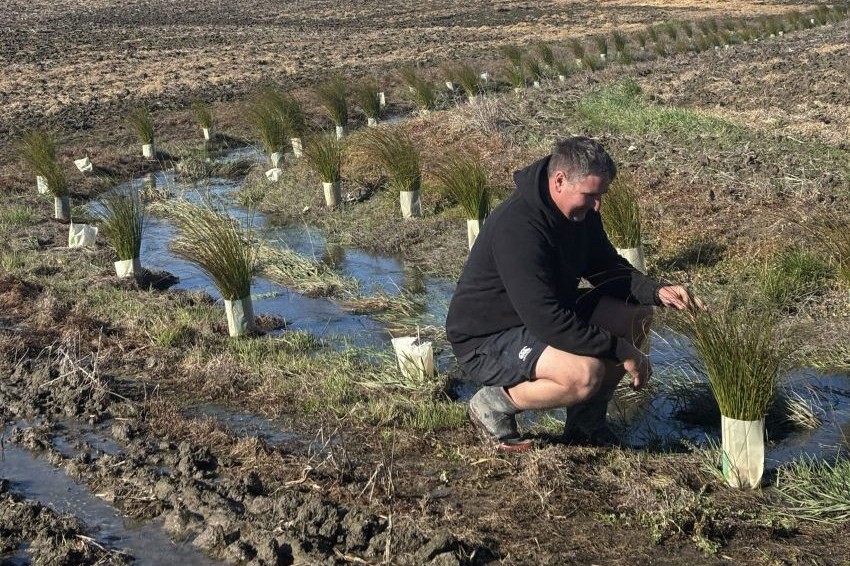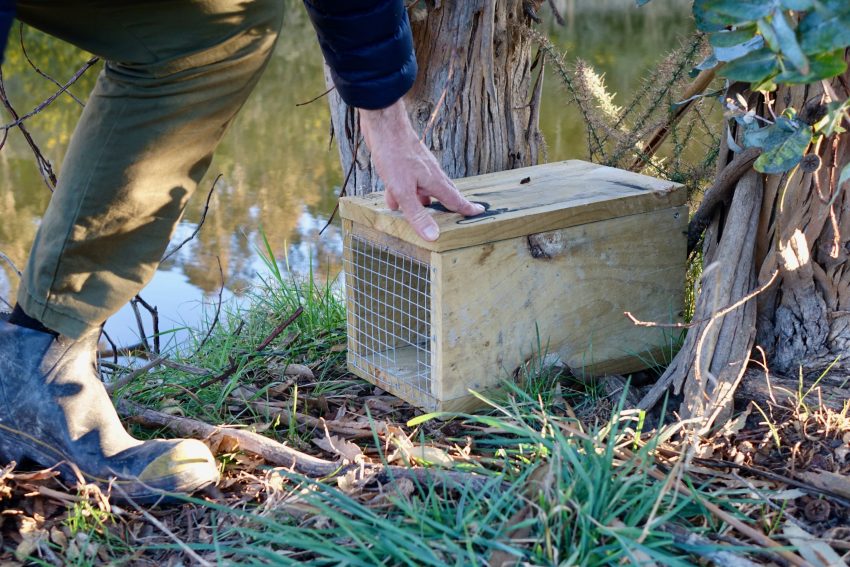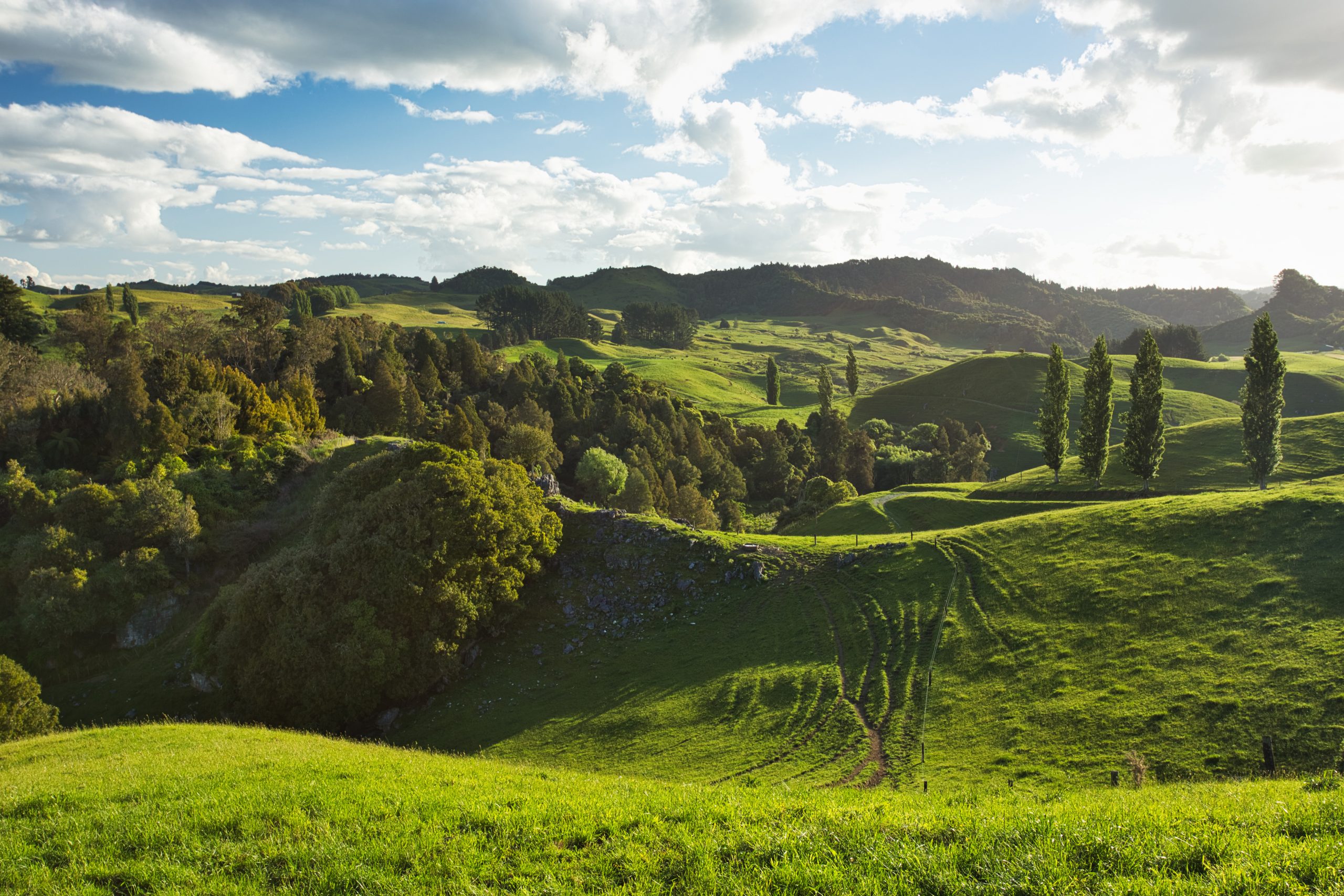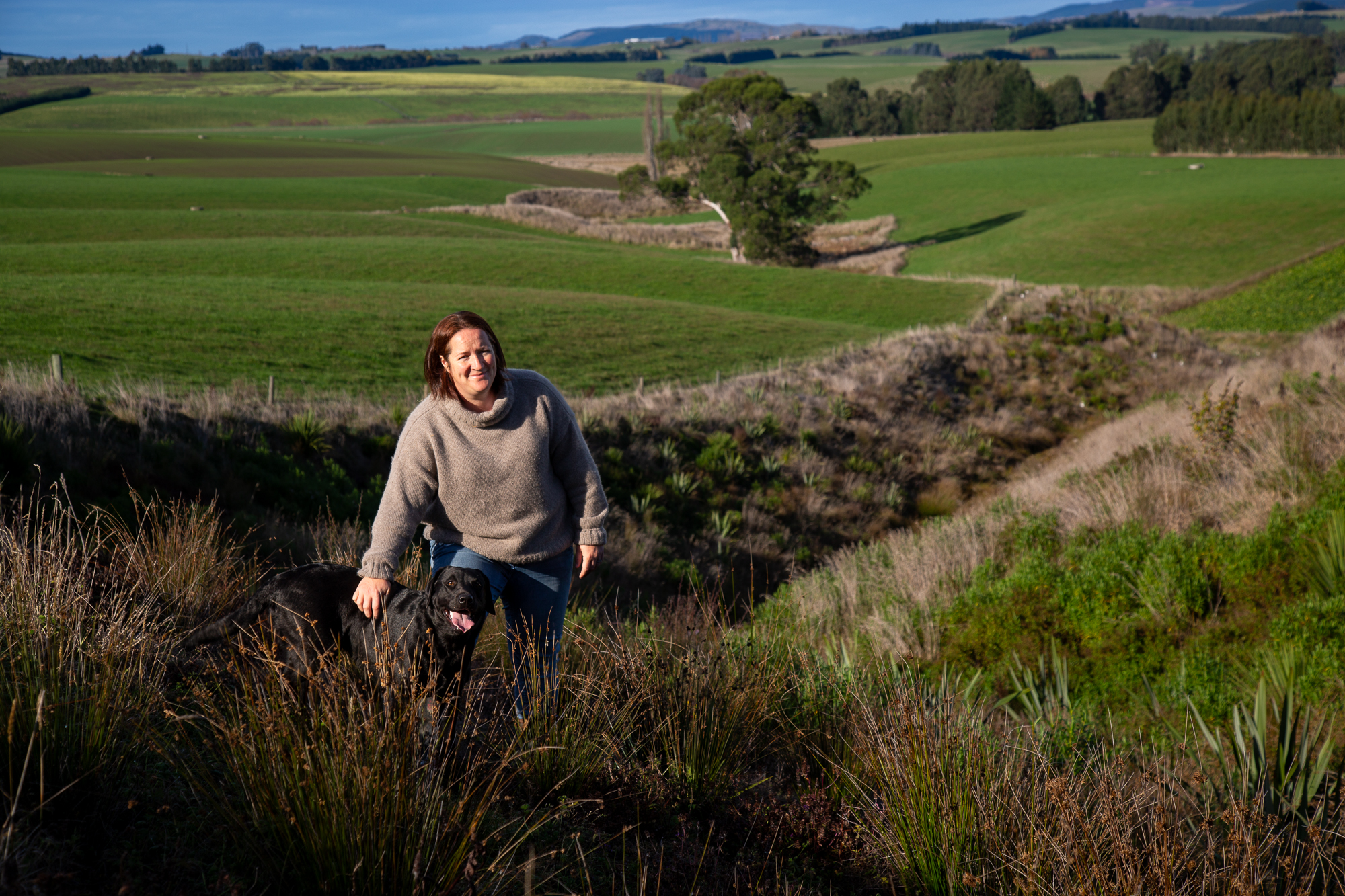Right tree, right place
An extensive tree planting programme on Awapapa Station, near Gisborne, is bearing fruit. Trees and stock co-exist in a system that benefits the land and the animals. Rebecca Greaves reports. Photos by Louise Savage.

The right tree in the right place is well demonstrated at Awapapa, where trees provide a multitude of benefits, protecting the property in adverse events, without compromising the bottom line.
Alex and Megen Campbell have planted thousands of trees on the hill country station over the last 30 years, and Cyclone Gabrielle only served to reinforce the value of their approach on this erosion-prone land.
It’s not uncommon for the Campbells to plant 1000 poplars a year and, in their biggest year, they planted 2500.
Grazing areas are protected with space-planted poplars. More than 10% of the property is retired in woodlots, predominantly pine, with a balance of alternative species such as redwood, macrocarpa, acacia and Douglas fir. This is complemented with regenerating native bush.
Awapapa has about 30% tree canopy and is regularly producing above the district average Gross Farm Income (GFI) per hectare. In the 2022 financial year, Awapapa achieving GFI above the top 10%.
The poplars are generally pruned, allowing sunlight on to the pasture for stock to graze, and giving the option to mill the trees.
“They are planting whole farms with pine for carbon. This seems a disaster for what it is doing to the fabric of rural New Zealand, the environment and the future prosperity of the country.
“At Awapapa we are 30% tree canopy, we have substantial food production under that and we integrate the younger generation with a variety of activities associated with farming, both economic and social. It’s a great mix.”
Negative comments regarding trees and their tendency to restrict pasture growth have always been floating around, but Alex prefers to let the results speak for themselves.
“To come through Cyclone Gabrielle with a farm relatively intact from major damage is huge, particularly when viewing comparable land in the district with much less or no planting. We have a property which still has structure and a sound platform to move forward on.”
Alex says tree spacing is an ongoing challenge to get the balance right. Protecting topsoil and infrastructure is the critical issue.
“Make no mistake about it, Awapapa took a pounding from the cyclone and it is a huge task to restore full functionality, however we can see our way forward.”
Like many, Alex is questioning the sustainability of pine trees, particularly the blanket planting of pine.
“They are a great cash crop, but we have pines here that have been an absolute disaster, they tipped over in the cyclone. Some of our pine blocks, we have lost 25%. It’s completely unsustainable to continue planting a lot of our less-productive land in pines.”
For this reason, they are moving towards replacing the pine woodlots (as they mature) with longer-term alternative species.
Planting trees is something Alex continued from his father, who came to Awapapa from Southland with a broad, open mind, after drawing the farm as a ballot block.

When his father arrived, there wasn’t a tree on the place and only six or seven paddocks. “He could see the East Coast being a great farming region, but also the hills and the erosion.
“He knew the value of trees as part of the ecosystem and set out to get the natural balance right. He saw timber, aesthetics, shelter, all the benefits of trees. He laid the foundation.”
When Cyclone Bola hit in 1988 it highlighted the value of the trees. And Cyclone Gabrielle has reinforced the belief they are on the right track.
“The morning after Gabrielle I came down to the river and saw how high it had come. I looked at surrounding massacred hillsides. This was quite obviously a moment that would change history in the region and change many livelihoods. There was no power, no connection, the rivers had smashed a path of destruction, it was mayhem everywhere.
“Then there was this warm feeling when casting an eye over Awapapa. We know this (the trees). The forward planning has worked, big time. All the hard work, all the foresight, has paid off.”
The way Alex sees it, planting trees is a form of insuring the land. They budget $10,000 to $15,000 annually for soil conservation.
“We willingly spent the same amount insuring all our toys and infrastructure – do we have insurance on the land? Our annual tree planting programme is our insurance on the land.”
Alex sees a threefold benefit from trees: practical soil conservation, commercial opportunities, and aesthetics. The property produces significant supplementary income from the trees that have been planted.
Cyclone Gabrielle is not the only storm the Campbells have weathered. They lost their farming enterprise in a mortgagee sale around the time of the Global Financial Crisis. They had expanded Awapapa from 350 hectares to 1600ha, with adjoining properties.
Alex says they never had any capital behind them at the outset and simply were not able to consolidate before hard times unfolded. When asked about regrets, Alex says there are none.
“Part of progression is exposure to risk. It is easy to look and talk in hindsight, however we only get one life and a cosy number is not our style. The country is built on progression and we take that on board. “We are now moving forward without any substantial equity but it has been a great period to reflect on some of the most important aspects of life. Money cannot buy everything and we have been able to retain a sound foundation.”
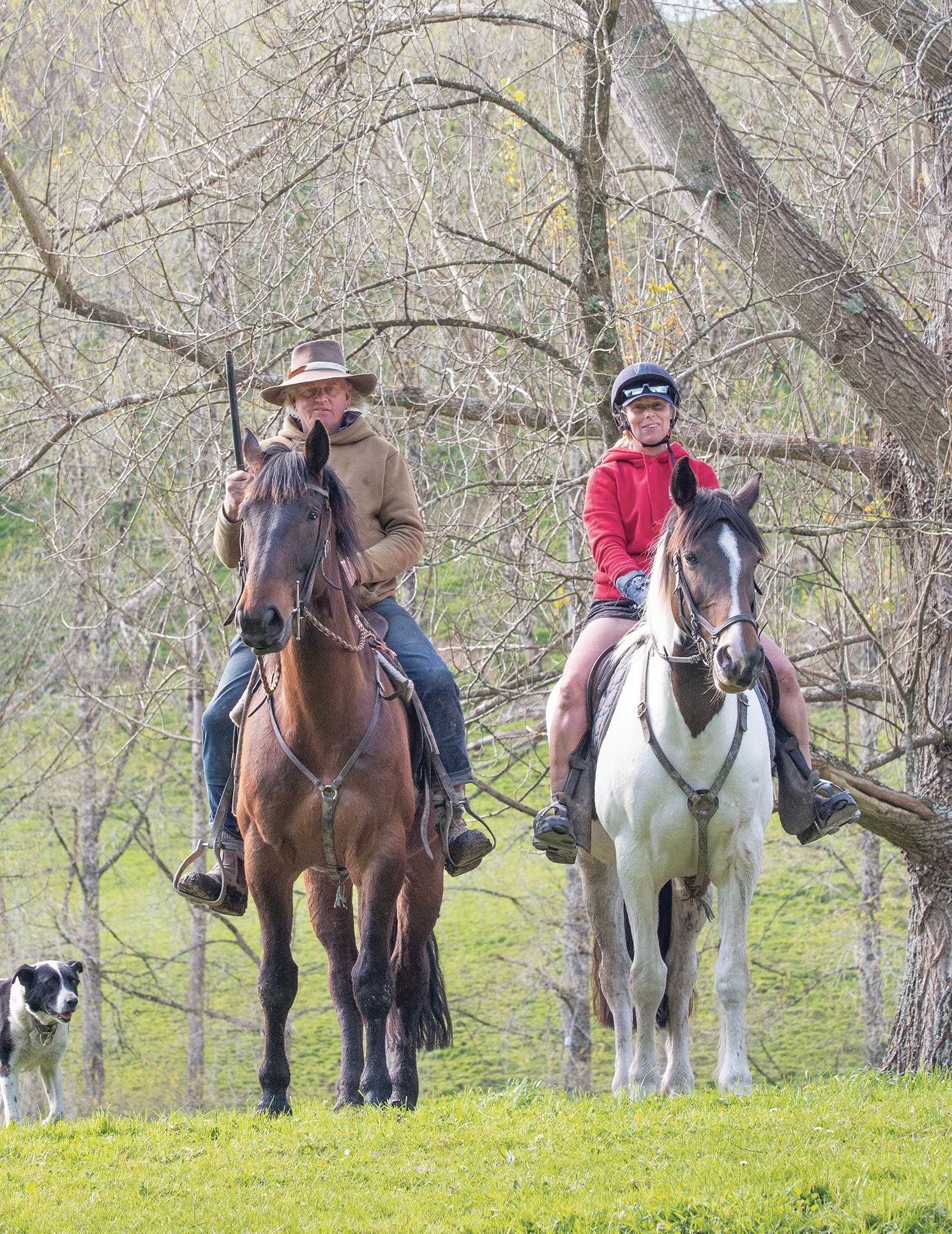
The Campbells stayed on to manage Awapapa and neighbouring Dumgoyne for the new Swiss owners. When the Swiss arrived, they asked why Alex had planted so many trees. He showed them a photo of the damage from Cyclone Bola, which answered the question, no words needed.
“What goes up eventually comes down, we need options for when the tree reaches expiry. Willows are no good, I’m poisoning every one I can get my hands on. They are a growing mess, planted in the gullies to solve erosion – 20 to 30 years on, what happens?”
Ideally, a 50-year-old poplar will yield 10 tonnes of pruned saw log. Alex says it is important to maintain and look after the trees so they can be utilised as a commercial product.
“Here you see pruned trees, clear so the sunlight can get in underneath. We have carbon, 30% tree canopy and stock grazing, all existing together. This is applicable on any farm.”
One of the biggest challenges is the lack of a sustainable market for poplar here. He says there is as much poplar milled in the United States each year as there is pine in NZ. Poplar is an extremely versatile wood, used worldwide for timber.
“There’s no sustainable supply of poplar in New Zealand to feed a sustainable market.”
Alex says it is never too late to start planting trees, and it is possible to make meaningful change within a generation.
“We have to produce food, you can’t eat the poplars. It’s prosperity. We have to be practical and we have to eat. This is a dual-purpose system. But we need to invest in looking at these alternative species and finding a sustainable market.”
Read about Alex and Megen’s stationbred breeding programme, Hangaroa Landcruisers, in the next issue of Country-Wide.
Report analyses slips
Dr Ashton Eaves, a senior land scientist with the Hawke’s Bay Regional Council, published a report analysing the slips on Awapapa and Dumgoyne after Cyclone Gabrielle. The Campbells had continued their planting policy on Dumgoyne, but the plantings on that block are much younger than those on Awapapa.
The cyclone provided the opportunity to assess the efficacy of poplar poles at reducing the number of land slips on the two properties.
The study found the presence of trees at Awapapa likely influenced a reduction in slips by 71%, when adjusting for farm size and slope. Adjusting for farm size alone, vegetation reduced slips by 45% across the two farms. Grassland was the dominant cover in which slips occurred on both properties.
Awapapa had less than half the rate of slips per hectare, at 1.63/ha. Dumgoyne had 3.66 slips/ha.
The report found slope also had a discernible influence on slipping and was a “critical contributing factor” to land slips. It said space-planting slopes above eight degrees in trees was effective to reduce the likelihood of erosion during severe weather events.
Listen to the podcast:
Editor of Country-Wide, Rebecca Greaves along with her co-host Sarah Perriam-Lampp discuss the rebuilding of the East Coast and how to build back our farms with more resilience.

